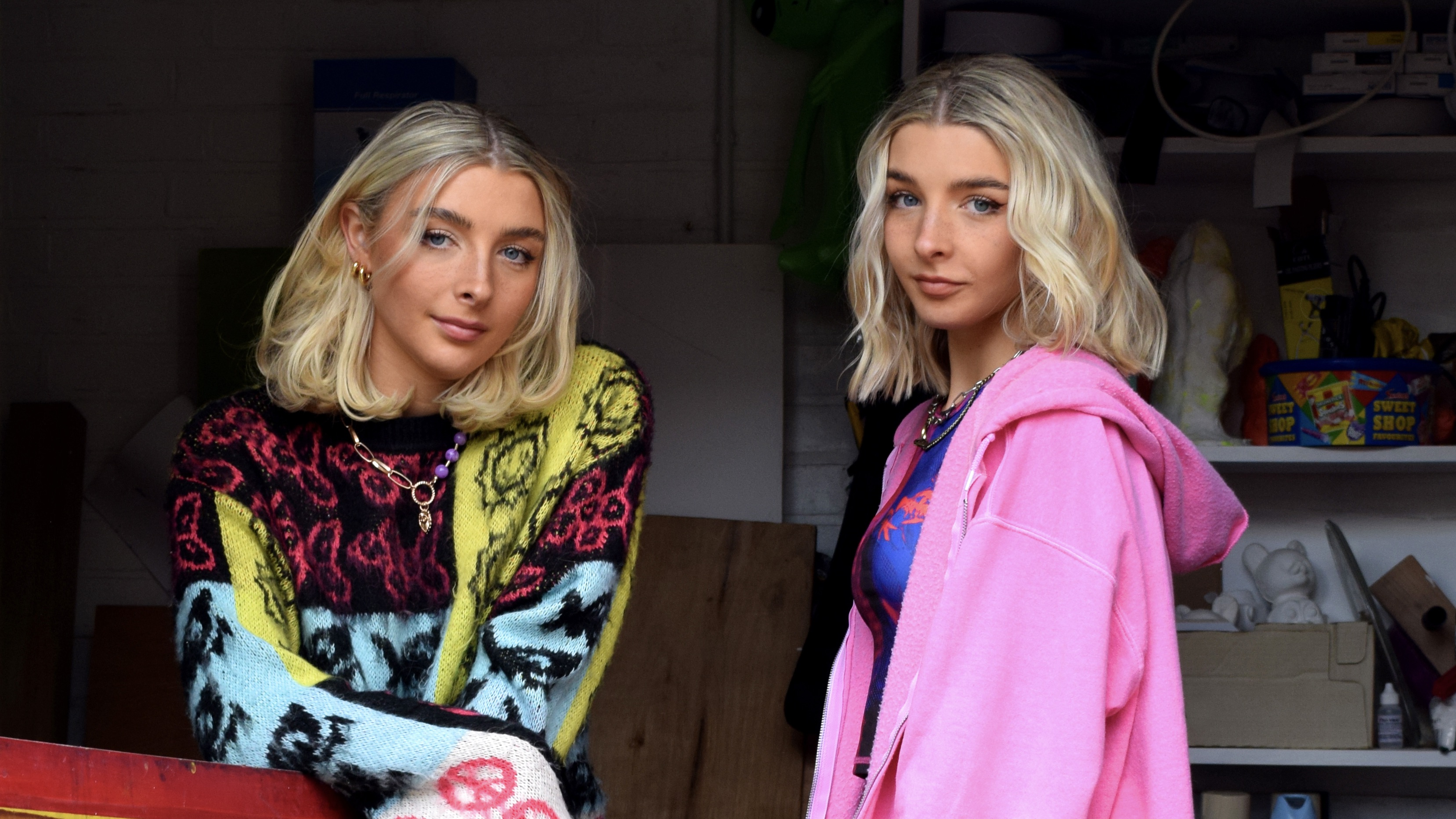
Our Day in the Life series continues this week with none other than the Cameron Twins, rising stars on the British art scene. Abigail and Phebe Cameron are a collaborative artist duo who have become known for their bright, bold work across various media, from screen print to sculpture.
With a vivid colour palette, naïve aesthetic and sometimes chaotic collages, their work is often surreal and explores nostalgia and childhood dreams, while the repetition of images in their printing process also references their personal experience as identical twins. Following the Twins' collaboration with the vegan footwear brand Løci, we caught up with them to learn more about how they work, and how they resolve any artistic differences.
What's a typical day like for the Cameron Twins?
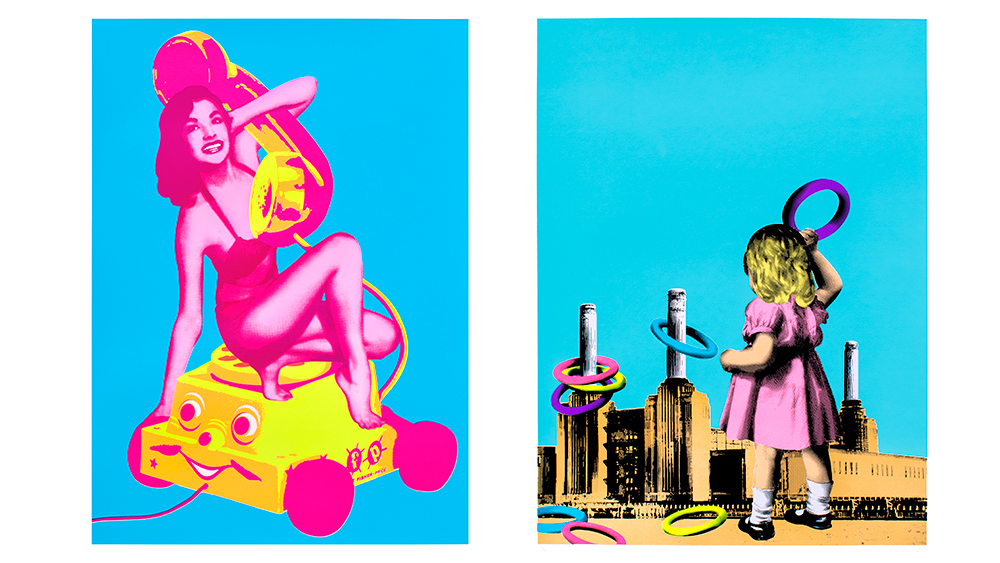
For us, there's no such thing as a typical day! We mix things up, sometimes working side by side, sometimes separately… and sometimes exploring creative outlets like galleries, museums, junk shops either together or independently. We don’t work within fixed hours or regular routines, so we can often be working for some very long and anti-social hours!
Our typical day often involves a variety of tasks, such as creating content to update our social media, admin tasks like answering emails, meetings, checking artwork enquiries and updating our website. If we are working on art pieces in the studio, we have the additional laborious but vital tasks of prepping or stripping screens and organising or cleaning our studio space. The artwork itself could involve making moulds, hand casting, spray painting, stencil cutting, collaging, hand painting/finishing and of course screen printing.
Which project are you the most proud of and why?
We’ve recently been lucky enough to be involved in a couple of really exciting projects! We were really proud to be asked by British GQ to be the exclusive artist for their Men Of The Year 2023 VIP goodie bags. This was a really exciting project to work on, and we created a new original artwork ‘Cowboy Rodeo’ - a large-scale, multi-layered Silkscreen print on wood.
This was a challenging piece to make, and we also experimented with some new processes so we were really proud of the final outcome! We are also very proud of the charity collaborations we have been part of this past year, such as designing our own sneakers with Løci which was raffled to raise funds for the Re:Wild Charity, as well as working in collaboration with Chef Tom Kerridge and West Contemporary to release a limited print in support of the amazing food redistribution charity FareShare!
Tell me about a tricky work-related challenge and how you approached it
Working with screen print is always a challenge as it involves so many stages and steps which can go wrong at any time, wrecking all the work you have already done!
You can literally get to the final stage or layer and then something goes wrong, you have to start the process all over again from the top which is obviously extremely frustrating! These problems can also be amplified when working on large scale artworks, which can be hard to handle, so it’s already a very hands-on and physically strenuous process. So this scaling up has meant we have had to be quite experimental in adapting our processes so we can cope with the larger equipment, more materials and with the addition of mixed media work.
What was your early career like?
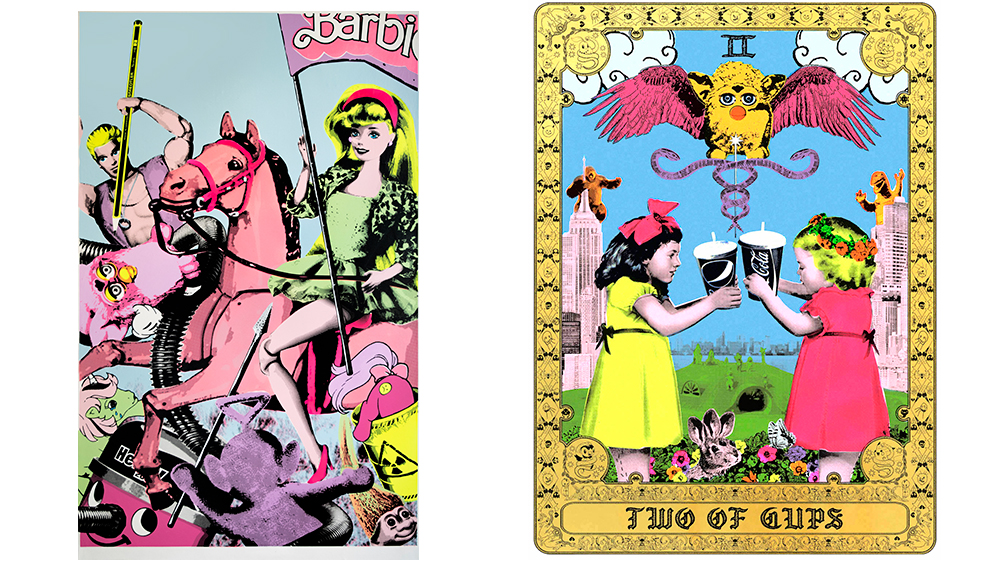
We were awarded our first show after winning an external prize for our collaborative installation and printmaking degree show work. This was a solo show in Leicester town centre, we made our first ever sales and received a very positive response to the show which gave us the confidence to continue our practice.
In our early career we had to work very differently compared to now, making our own DIY Screen Printing set-up comprising of a home-made exposure unit and simple wooden screenbed. This early set-up limited us greatly with regards to the size and complexity of the artwork we could create! We had to work very closely together as we didn’t have a studio space, so we were restricted by the physical space we had available to create and store our work in. Despite these challenges we created a lot of new work and thoroughly enjoyed this stage of our career as it forced us to work experimentally and outside the box, which really influenced the way we work now!
Are you always aligned on how you want a piece to look?
No, we often start from very different viewpoints, so it's never straight forward and smooth sailing. However these discussions (which can often be quite dramatic!) create an energy and vibrancy to our work and take us to some unexpected places by the end result. This not only leads to an artwork we are both happy with, but creates something much more interesting and dynamic than the original ideas might have been.
How do you settle any artistic differences?
As we mentioned, addressing our artistic differences is a big part of our process, especially as our experience working collaboratively as twins (and sisters), means there is absolutely no filter on our ‘constructive criticism’!
The process involves a lot of disagreement, continuous changes and compromise. These become opportunities to open up and explore alternative perspectives ultimately making both our process and the final outcome more interesting… even if it does make the process a long and often demanding one. This results in a fusion or merging of our ideas which only enriches the artwork we are creating.
How did you develop your current style?
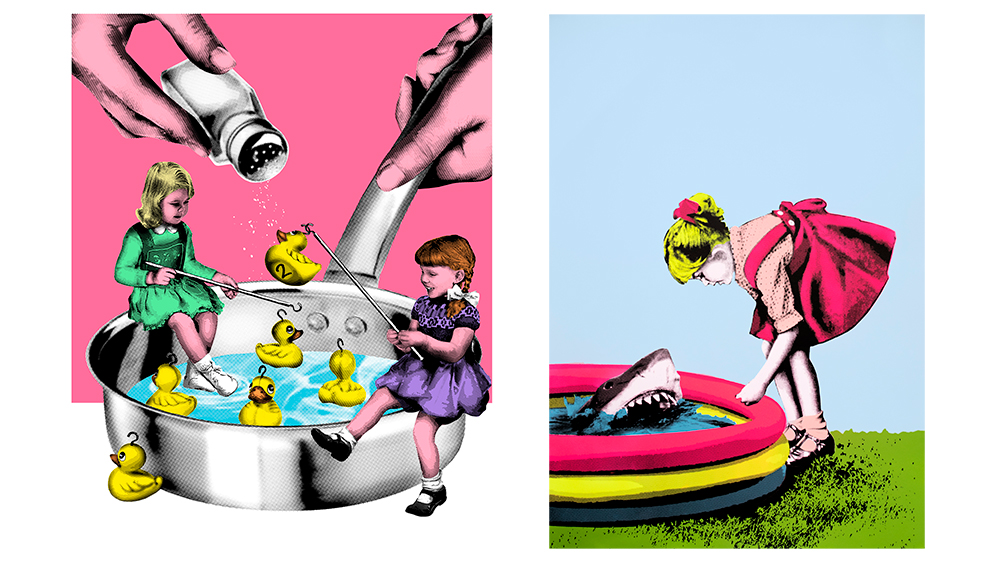
Our current style has developed as a result of a combination of both our collaborative process, and playful approach to creating. The experimental and playful aspects of our work have been important in shaping a distinctive aesthetic.
A process which has had a significant impact on our style is our use of screen print, and how we have used this analogue process to impart a distinctive vintage quality to our creations. This printing technique directly contrasts with the use of modern fluorescent and our love of oversaturated colour palettes. The resulting juxtaposition in our work has created a unique visual experience, evoking a sense of familiarity and connection to the past through the screen printing process, while simultaneously embracing the contemporary vibrancy of bright colours.
Your work often involves images of childhood, what about childhood do you find interesting, from an artistic point of view?
Our own shared childhood memories started as the main inspiration for our work. Childhood imagery and memory interests us specifically because it provides a source of inspiration from a unique perspective – being twins we have had the strange experience of encountering many life events at the same time/place/age and therefore sharing many identical memories, but also interestingly different memories & perspectives of the same events.
We want our artwork to also invite the viewer to venture into their own personal journey of reflection and childhood imagination through the lens of nostalgia, and as a result this often raises interesting conversations. We have provided individual viewers with a space for introspection, and love that they are constantly sharing with us their own personal childhood memories and recollections and that these are re-ignited by our artwork.
This sharing of childhood memories across different ages is really interesting to us from an artistic point of view, as it gives us access to others’ stories, perspectives and memories which can bring about new inspiration.
Are there any digital elements to your work, or is it all hand printed?
Although we do hand-pull all of our screen printed artworks, which involves many individual layers, there are some digital elements to the screen printing process in the early stages. We often work together on the digital files which are then printed onto transparencies and transferred onto the screens we will later screen print with. Working digitally is a really useful way for us to collect imagery and ideas that inspire us, we can also scan drawings in and manipulate them, as well as using digital mock-ups to aid the communication of ideas throughout our collaborative process.
Tell me about your sculptures
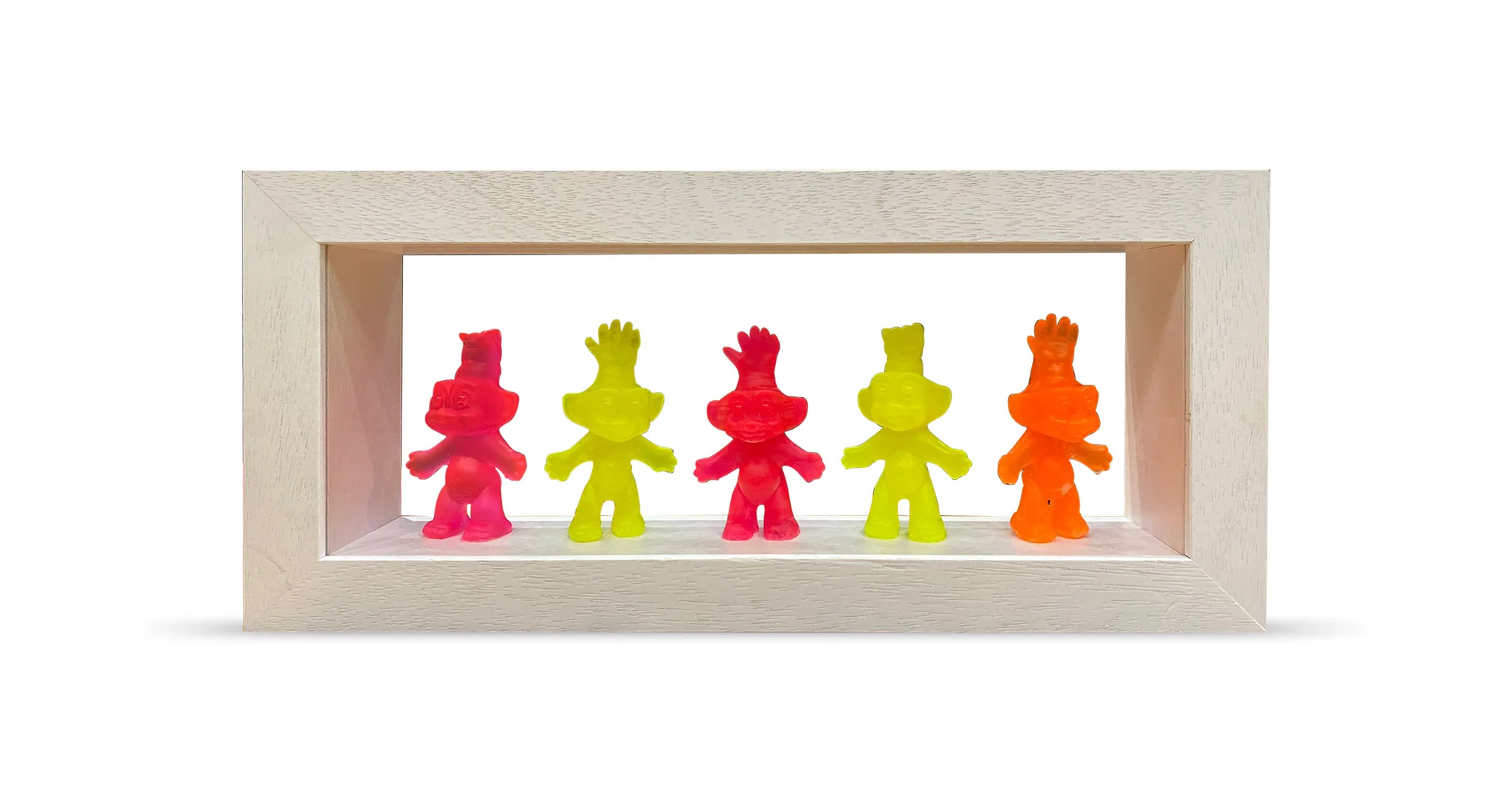
Our sculptures are an extension of the same playful process of our two-dimensional work. We love working in a range of mediums so wanted to develop our technique of fragmenting and reassembling imagery by using the same concept but working with physical objects as a type of sculptural montage. We use our old childhood toys which we have collected over the years, as well as interesting objects we have found at junk shops and markets, and disassemble them into separate parts which we then montage into new, hybrid creatures by creating a mould and then hand-casting them in bright UV coloured plastic.
The sculptural process is very messy and unpredictable, it is impossible to create completely identical sculptures from each mould so all are slightly unique - which connects to our interest in exploring multiples. By using colourful plastic, the sculptures are linked back to their original source of inspiration (children’s toys) making the new sculpture both entertaining but also memorable in a new way.
The plastic is often semi-transparent due to the thin nature of the material and are reminiscent of a balloon-animal, giving them a nostalgic, playful quality and joyful aesthetic which directly juxtaposes with the slightly grotesque imagery within the sculptures (such as disembodied doll heads, and misplaced limbs). We choose to create these colourful sculptures with underlying sinister narratives as a way to convey the idea that Nostalgia and seemingly happy memories could actually have been fragmented, distorted, and re-imagined by the mind over time.
What’s your dream project?
We are always talking together and getting excited about all the things we’d like to do in the future. We love experimentation and trying new processes, so our dream project would be to work on a very large scale sculpture piece… something massive and brightly coloured!
What career advice would you give your younger selves?
Stay positive and don’t be put off by other people’s criticism, just keep creating!
Voices in British Art Volume III in collaboration with West Contemporary Editions at Kerridge's Bar & Grill is on until the end of March and features works of The Cameron Twins specially commissioned by Tom Kerridge.







